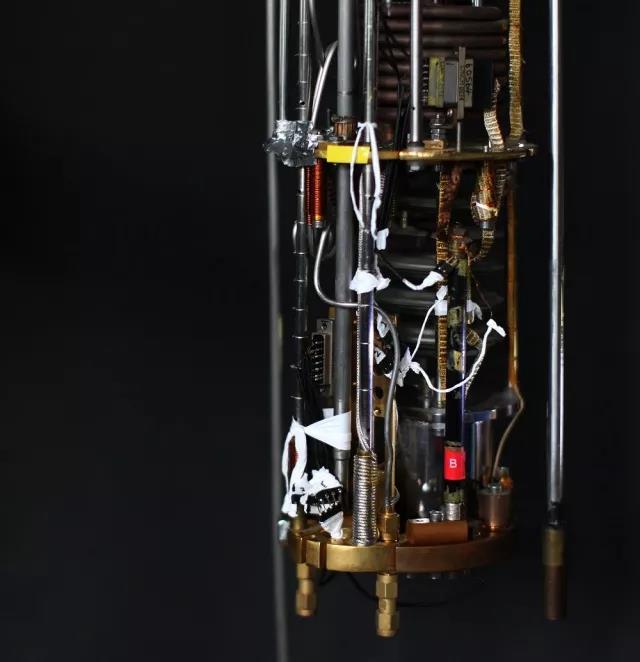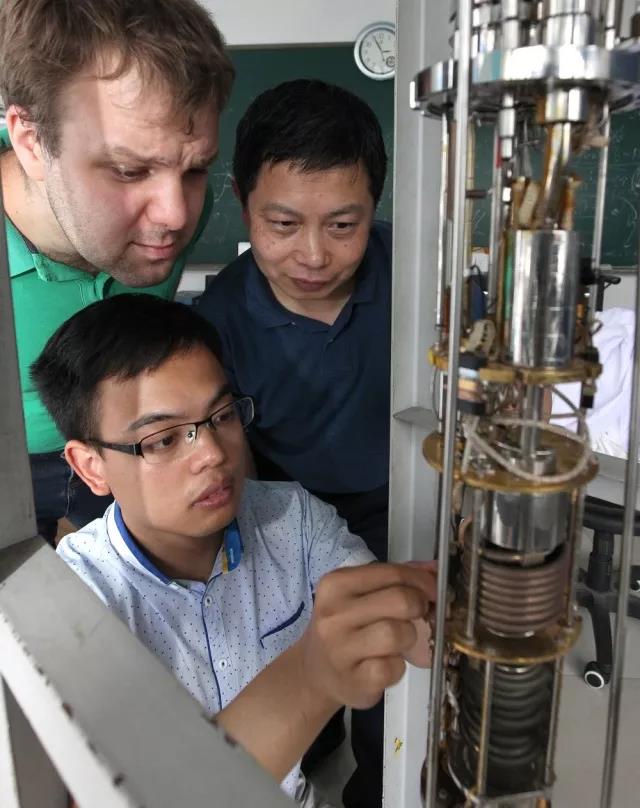Scientists discover novel features of heavy-fermion superconductors

German professor Frank Steglich, the discoverer of the first heavy-fermion superconductor, CeCu2Si2, is particularly concerned with an experiment underway at Zhejiang University.
The research team headed by Prof. YUAN Qiuhui with the Center for Correlated Matter and the Department of Physics put CeCu2Si2 into a special device at an extremely low temperature, thus probing the superconducting gap symmetry by measuring the temperature dependence of the London penetration depth. After one experiment after another, they propose a scenario of a fully gapped d+d band-mixing pairing state, which reconciles all of the seemingly contradictory results.
Superconductivity is the phenomenon of certain materials exhibiting zero electrical resistance and the expulsion of magnetic fields below a characteristic temperature. The history of superconductivity began with Dutch physicist Heike KamerlinghOnnes’s discovery of superconductivity in 1911. At present, superconducting materials are applied in magnetic resonance imaging and superconducting maglev trains.

Developing superconductivity at a normal temperature is a long-cherished dream for scientists. “There is no consensus regarding the mechanism for unconventional superconductors in academia. Theories are constantly ‘chasing after’ experiments,” observes YUAN Qiuhui, “Scientists may well discover a novel type of superconducting material in a fortuitous case first. Then they engage in research into the working mechanism for that material in the hope of developing a higher-temperature superconductor.”

CeCu2Si2 was thought to be a d-wave superconductor with gap nodes, until recent specific heat measurements provided evidence that the gap is fully open across the Fermi surface. YUAN et al propose a solution to this puzzle from measurements of the London penetration depth, which give further evidence for fully gapped superconductivity. They analyze the data using a d-wave band-mixing pairing model, which leads to a fully open superconducting gap. Their model accounts well for the penetration depth and specific heat data, while reconciling the nodeless and sign-changing nature of the gap function.
The findings are published in the May 22 issue of the PNAS. The lead author and the corresponding author are PANG Guiming, a Ph.D. candidate, and Prof. YUAN respectively. The research is jointly carried out by Zhejiang University, Rice University, the Max Planck Institute for Chemical Physics of Solids and the University of Augsburg.